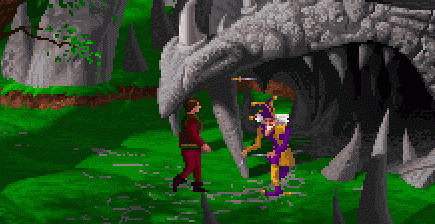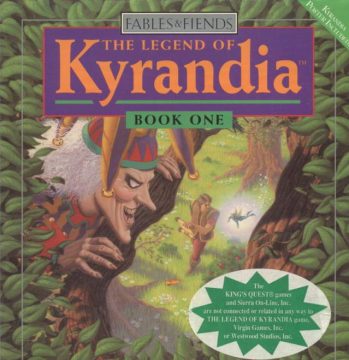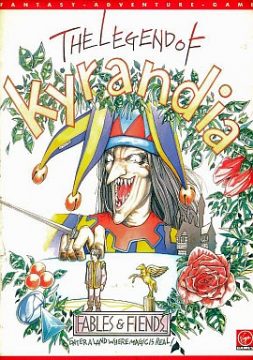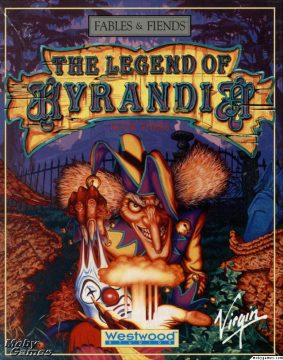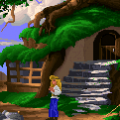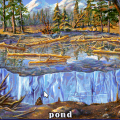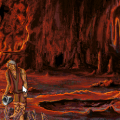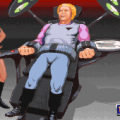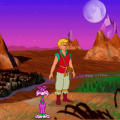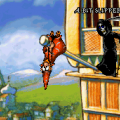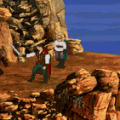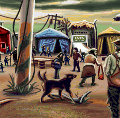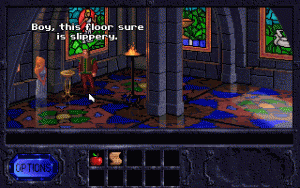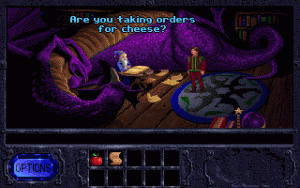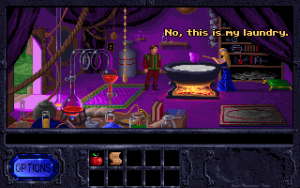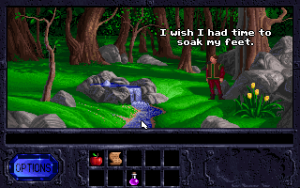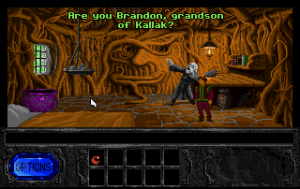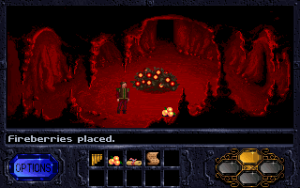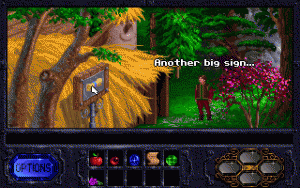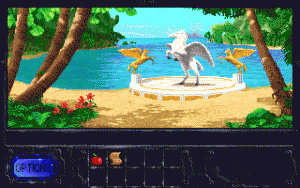- Legend of Kyrandia Book One, The
- Legend of Kyrandia, The: Book Two: The Hand of Fate
- Legend of Kyrandia Book Three: Malcolm’s Revenge
History will remember Westwood Studios as the guys who invented the modern real time strategy genre, introduced with the groundbreaking Dune 2 and refined with Command and Conquer. Yet their talents spread far wider than their reputation one might lead one to believe, with the fairly decent RPG series Lands of Lore, and their adventure game series The Legend of Kyrandia.
The Legend of Kyrandia games sprang from the mind of Brett Sperry, one of the heads of Westwood Studios. The name sprung from a MUD that him and his friends used to play, called Kyrandia: Fantasy World of Legends. It is no longer around, obviously, although it doesn’t appear that much substance was derived from it beyond the name.
At first look, the world of Kyrandia seems to be a typical adventure game setting, filled with fantasy clichés and wistful fairy tale stylings. And, to be fair, the first game really doesn’t stray far from any stereotypes. Still, it tends not to take itself too seriously, which helps give it some identity. But its personality grew with each sequel, introducing weirder characters and expanding the bizarre kingdom of Kyrandia. By the third game, the finale of the series, the series had crafted such an imaginative and crazy world that it would give hallmarks like Monkey Island and Day of the Tentacle the proverbial run for their money.
Each of the three games share some commonalities, notably the gorgeous background graphics and immensely catchy soundtracks. Each also has a fairly straightforward, single icon interface. Items are manipulated by clicking on them, and then either dropped into the inventory window or used on something on the screen. Since inventory space is limited, items can also be dropped practically anywhere and retrieved at a later time.
Despite the change in tone amongst the games, from normal to weird to even weirder, there’s a consistent amount of world building, especially through the characters. The initial entry introduces us to the mystics of Kyrandia, who control all of the magic in the kingdom. Brandon, the hero of the first game, regards them with the greatest of reverence. The second game puts you in the shoes of Zanthia, a mystic herself, who regards her fellow magicians with occasional bits of cattiness. The third game puts you in the role of Malcolm, the villain, who regards the group as nothing but a bunch of pompous jerks. There’s a well written sense of continuity amongst all three games, as there are a number of recurring characters, and it creates a fully-realized land that’s a joy to inhabit.
Malcolm isn’t your typical jester, the kind who smiles and laughs and trips over things for the amusement of other people. No, he’s a psychotic nutjob who’s taken a few notes from the Joker, the famous Batman villain. He’s an immensely powerful magician and uses his powers to murder the king and queen of Kyrandia in hopes of ruling it himself. He is captured, but soon proves too powerful and breaks free, wandering the country and taking vengeance on those who imprisoned him.
Brandon is the grandson of a royal mystic named Kallak, who is turned to stone by Malcolm in the opening sequence. (Malcolm, being the magnificent bastard he is, leaves Kallak’s eyes open, so he may gaze forever on the terrors Malcolm will cause.) This is Brandon’s motivation to take up arms, but he’s hardly qualified for it. He’s affable, but his attempts at humor often fall flat, and he’s missing most of the elements that make a compelling protagonist. More often than not, he comes off as a bit of a weenie.
There are a few other interesting characters, at least. Some of the most charismatic include the pin-headed wizard Darm and his sarcastic pet dragon Brandywine, and the sassy sorceress Zanthia, who went on to star in the sequel. However, the plot never really evolves beyond the “save the land/defeat the bad guy” premise, so it’s hard to get too involved. At least Malcolm proves to be an appropriately despicable villain. You need to be careful in each encounter with him, because despite his jocular demeanor, he will kill Brandon in cold blood without hesitation.
The land of Kyrandia isn’t necessarily huge, but it feels that way due to the extraordinarily repetitive scenery – you’ll see the same “generic forest screen” several times before you reach the end, and it’s one of the few modern adventure games where you might actually need to make a map. The puzzles are hardly inspiring either. One of the early ones revolves wandering around and collecting gems randomly strewn throughout the land – hardly the most compelling of tasks. As you progress through the game, you’ll also find four different magic spells, activated through an amulet on the bottom of the screen, but it’s not used for anything particularly interesting either.
Far more frustrating is a cavernous maze about a third of the way into the story. Like most caves, it is shrouded in darkness, but at certain points there are Fireberry bushes, whose fruit can provide some light. The fruit can only last for three screens while in Brandon’s inventory, but they’ll stay permanently lit if they’re dropped on the ground. Beyond the fact that this doesn’t make sense, you’ll find yourself dropping berries, backtracking to pick up more, venturing a little bit further, returning, and doing this over and over, all while trying not to get lost. There’s some trial and error involved too, because if you wander into a screen without a Fireberry bush and your lights go out, you’re instantly devoured by the monsters within. It’s not difficult, all things considered, but it is incredibly tedious.
Despite the repetitive backgrounds, the graphics are quite nice, detailing Kyrandia as a lush world full of vibrant greens, and the music is quite good too. The CD-ROM version features full voice acting, and most of it far better than any other adventure game of the time. Despite its annoyances, it’s a pleasant game, although hardly a classic.
